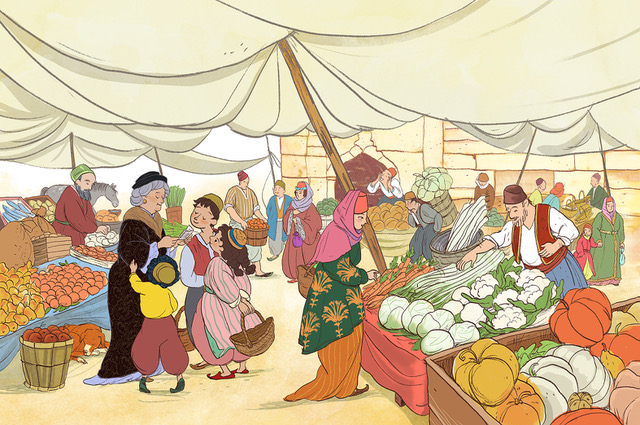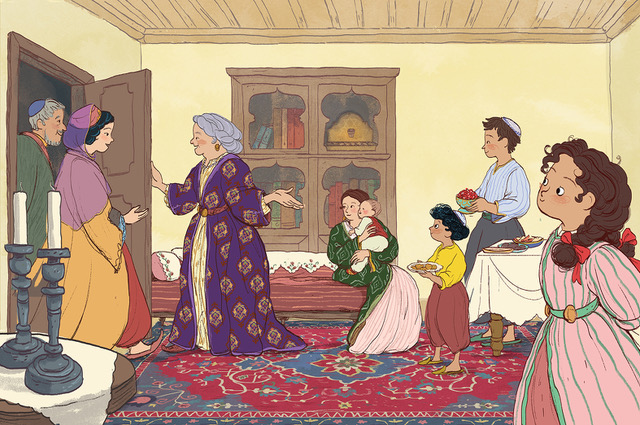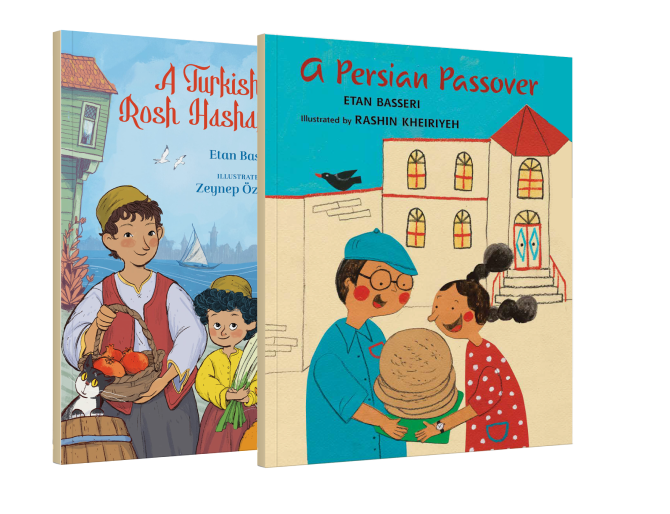
How often do you see Sephardi customs featured in children’s literature? When I started writing picture books, it was not just to entertain kids (though that is important, too). It was about continuity — passing on Jewish tradition in a way that feels alive.
Picture books can do what black-and-white family photos or well-worn prayer books cannot: they meet kids on their level. With bright illustrations, relatable characters, and a rhythm that invites participation, they make our history and traditions more accessible, not distant. Picture books do not just tell kids about tradition; they let them see it, feel it, and imagine themselves inside it.
All children deserve to see themselves and their customs reflected on the page. If a kid from a Persian Jewish family sees characters smacking each other with green onions during the Seder, they light up. “Hey, we do that!” That kind of recognition is powerful.
Growing up, I loved Hershel and the Hanukkah Goblins and The Carp in the Bathtub, and while those stories beautifully highlight Ashkenazi and Eastern European Jewish culture, I didn’t have any equivalent for my Persian heritage. By the time I became a parent, Sephardi and Mizrahi traditions still were not visible in children’s literature. That is why I started writing stories based on the holidays and customs I know — because if we don’t tell those stories, who will?
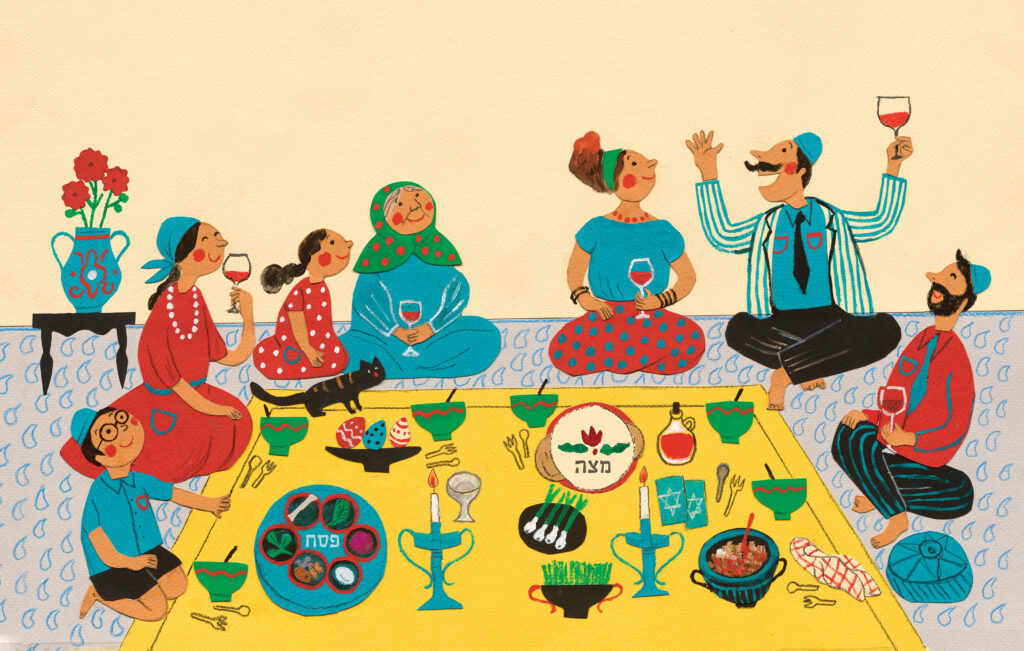
I usually start with a holiday or a family tradition — something real — and build from there. I work out an outline of the plot and add in characters with personalities, colorful settings, a lot of food, and a little mischief. The talented illustrators I work with are from the regions I write about, and they always incorporate a wealth of authentic detail that I could never dream up on my own. If I do my job right, we end up with a book that kids will want to read again and again.
One thing I always try to show in my stories is that kids are not just along for the ride — they are essential. The children in my books take on real responsibilities to help prepare for the holiday at hand. Whether it’s gathering ingredients, solving a problem, or saving the day, their actions move the story forward. They work together as a team using what they know and learning along the way. And through it all they are proud to be part of their family’s traditions — to celebrate their Jewish identity not just as observers, but as active participants.
Whenever I do a school visit for story time, I ask kids to look closely at the illustrations: Do you see anything your family does? Can you spot all the cats in the market?
Now I’ll ask you the same. Take a moment with these illustrations. What feels familiar? What surprises you? What details make you want to ask questions, or share your own stories? This is where connection begins — with curiosity, and with stories that celebrate our proud heritage.
A Persian Passover, written by Etan Basseri and illustrated by Rashin Kheriyeh, Pennsylvania: Kalaniot Books, 2023.
A Turkish Rosh Hashanah, written by Etan Basseri and illustrated by Zeynep Özatalay, Pennsylvania: Kalaniot Books, 2024.



A Journey into Memory, Culture, and Emotion
Illustrating The Persian Passover was a journey into memory, culture, and emotion. From the very first sketches, I felt a personal connection to the characters — especially Ezra and Roza, who help prepare for the family’s Passover celebration. Their quiet strength, curiosity, and love for tradition reminded me of my own childhood in Iran, surrounded by rituals, family stories, and the beauty of everyday life.
The story is set in 1950s Iran, and I knew it was essential to portray the Passover seder in a way that honored the specific traditions of the Iranian Jewish community. Thanks to the guidance of Etan and the thoughtful support of editor Lili at Kalaniot Books, I was able to visualize the seder setting in more detail.
I chose to work in oil paint and collage for this book. The oil paint allowed me to capture depth, light, and emotion, while the collage gave me space to incorporate traditional textures — Persian rugs, patterned textiles, decorative tiles — that are part of the cultural identity of the characters.
One of my favorite moments to illustrate was the bakery scene. As I was painting it, surrounded by images of warm ovens and bakers pulling out matzah, I could almost smell the scent of fresh Persian bread in my studio. That moment reminded me how deeply memory and art are connected — and how storytelling through illustration can awaken all the senses.
It’s interesting to me that many people still don’t know there are Jewish communities living in Iran. Through this book, I hope readers feel the strength, resilience, and beauty of a family celebrating faith and freedom.
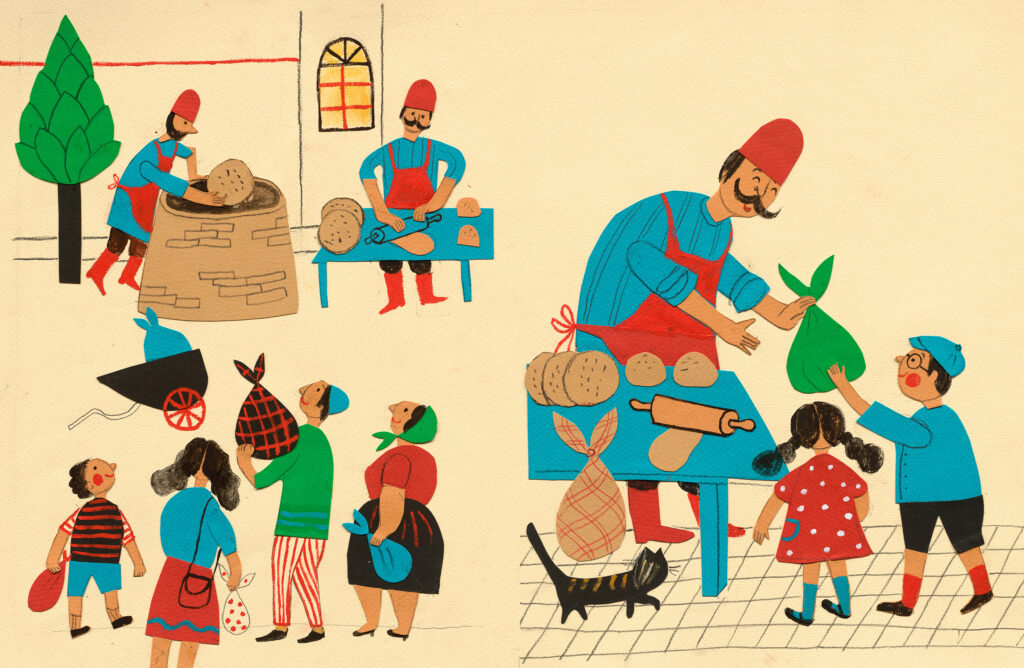


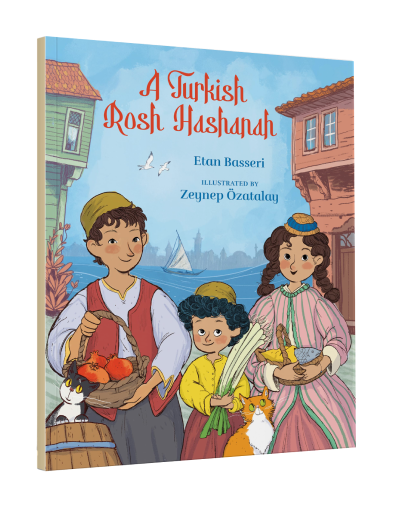
Bringing Cultures Closer Together
When Kalaniot Books first contacted me about the story of A Turkish Rosh Hashanah, the project immediately caught my attention. As an illustrator who was born and raised in Istanbul, I’ve always been impressed by the multicultural fabric of this ancient city. While drawing the book, I had the opportunity to learn new things about both Sephardi culture and the city life of the period.
We embarked on a long journey through traditional clothing, food, and objects under the meticulous guidance of Lili Rosenstreich from Kalainot. Lili did not hesitate to knock on many doors to have the historical accuracy of the objects used in the house verified. It was important for us to reflect the warm and friendly atmosphere of the book as well as to be able to keep the historical accuracy. Lili researched various options for the antique menorah in order to find the right one for the period. With the help of JIMENA, Lili asked for help from the Jewish Museum of Turkey in Istanbul to confirm the authenticity of the style. And then, after looking at all the options, Etan and Lili decided that this version should be the final one.
This is a book that we worked on with pleasure, and I am proud of the result. I believe it is very important for children to know their neighbors who over a hundred years ago ran on the same streets they walk on today. I hope that projects like this will bring cultures closer together and lead children to be more altruistic and kind in their later years.
